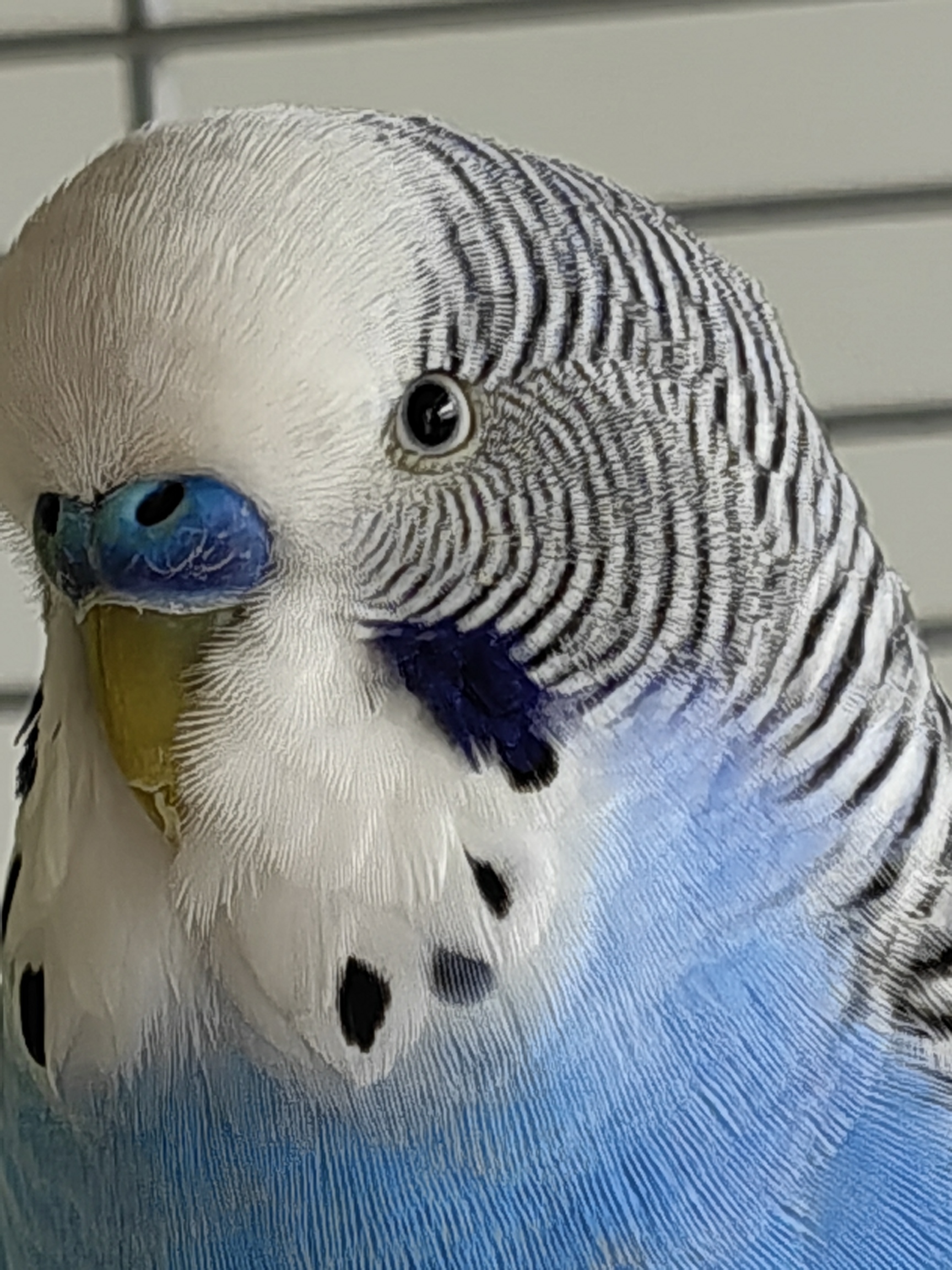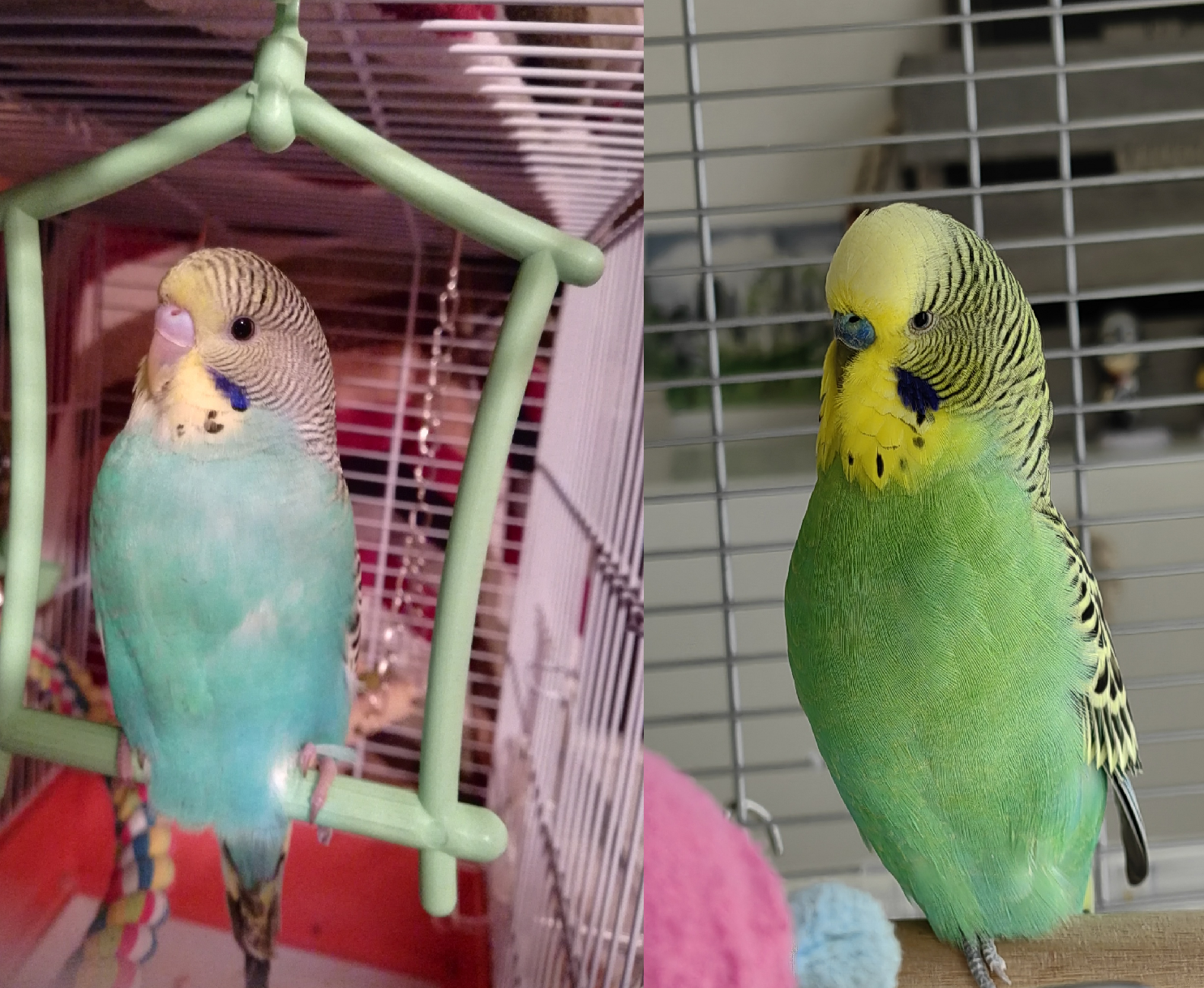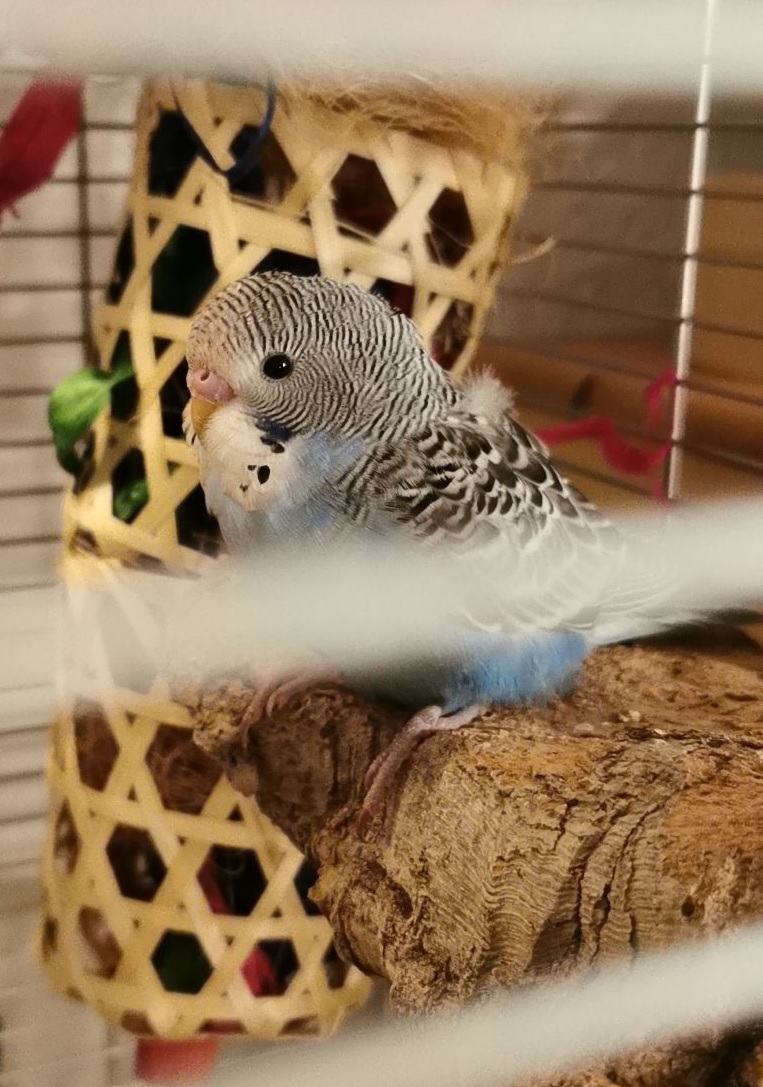Determining the age of a budgie (also known as a parakeet) can be a bit tricky, especially if you do not know the bird's hatch date. However, there are a few physical and behavioral characteristics that can help you estimate a budgie's age. How old is my budgie? This is a question that many people ask, and it can be challenging to determine the answer. I will help you figure out how old your budgie is and how to care for it when it reaches old age. A budgie can have a long lifespan of 10–20 years. While there is no way to determine the exact age in the middle of its life, you can use the methods here to determine if your bird is less than 4 months old or older than 6 years.
But how exactly can you tell the age of a budgie if you haven’t had it since the beginning?
Look at the cap feathers
The first is to look at the feathers on their head. If budgies are younger than 3 or 4 months, you will see strips of color on their heads. When they are older than 3 or 4 months, they start losing strips on the cap of their heads. The cap feathers on the head of a budgie can be a good indicator of its age. Young parakeets will have a stripe pattern on their forehead, that runs from the beak to the cap of the head. As they mature, these stripes will start to fade away and eventually disappear completely when they reach adult age.
- Striped cap (less than 3 to 4 months old ) – You’ll observe a striped pattern on parakeets younger than 3 to 4 months old. The reason behind this is that they have not yet gone through their first molting cycle, which is around the 3-month-old mark. During the molting process, they will lose their baby feathers and grow out a white or yellow cap, thus no longer having stripes on their foreheads.
- Solid cap (over 3 to 4 months old) – After the first molting cycle, the bird will no longer have any visible stripes on its forehead.

Hatchin's visible iris
Look at the eyes
One of the easiest ways to tell the approximate age of a budgie is by looking at its eyes. In a young bird, the eyes will be darker in color. As they mature, they will turn gradually lighter until they reach their adult coloring.
- Dark eyes and no visible iris in juveniles – Young budgies have dark to almost black eyes. As budgies age, their eyes will gradually lighten in color until they reach their adult coloring. If your parakeet does not seem to have a visible iris, it’s likely less than 4 to 5 months old.
- Development of iris at 4 to 6 months – When a parakeet is 4 to 6 months old, they start to develop a visible iris. This is a gradual darkening of the outer edges of their eyes that can be seen when looking closely. This is the first sign that your bird is beginning to mature.
- Dark grey iris at 6 to 8 months – At 6 to 8 months, their iris will start to darken into a darker grey.
- Light grey, brown or white iris at 8 to 12 months – At 8 to 12 months old, most parakeets have dark eyes with a light grey or brownish-grey color and flecks of white in the iris.
 Azuki at 7 weeks vs 5 years
Azuki at 7 weeks vs 5 years
Look at the cere
The cere is the small, raised area at the top of a budgie's beak where the nostrils are located. The appearance of the cere can provide some information about the age and sex of a budgie. In general, adult male budgies have a blue or purplish-blue cere, while adult female budgies have a tan or brown cere. However, it's important to note that there can be some variation in cere color between individual birds.
Juvenile budgies, both male and female, typically have a pink or purplish-pink cere. As they mature, the cere color will start to change to the adult color associated with their sex. This process can take several months to a year, depending on the individual bird.
It's important to note that while cere color can provide some clues about a budgie's age and sex, it's not always a reliable indicator. Some male budgies may have a pink or brown cere due to hormonal imbalances, and some female budgies may have a blue cere due to genetic mutations.
 Hatchin at 5 weeks vs 1 year
Hatchin at 5 weeks vs 1 year
Look at the beak color
The beak is the hard, pointed part of a bird’s mouth. Specifically, though, you’ll want to observe their color and how well-developed these parts are. If the beak is dark, almost black, then the bird is less than twelve weeks old. If the beak is lighter in color, then the bird is older than twelve weeks.
- Dark or black beaks – If your budgie has a dark or black colored beak (the hard part of the mouth, not the cere), it’s likely under 3 months old due to the excess melanin pigmentation which has not gotten a chance to break down and fade away. But note that only some juvenile parakeets have this trait of having dark or black beaks, so it should not be used as the main indicator of their age.
Does the age of your budgie matter?
Young budgies are generally easier to tame than older birds. This is because they are still learning and developing their behaviors, and are more receptive to new experiences and interactions with humans. When you bring a young budgie home, it's important to give it time to adjust to its new surroundings before attempting to tame it. Start by simply spending time near the bird's cage, talking to it, and offering treats to build trust and familiarity. Once the bird is comfortable with your presence, you can begin to slowly introduce your hand into the cage, offering treats and talking in a gentle, reassuring tone. Consistency and patience are key when taming a young budgie. Keep interactions positive and rewarding, and avoid forcing the bird to do anything it is uncomfortable with. With time and patience, your young budgie can become a friendly and affectionate companion.
Size and shape
The size of your parakeet will be the most telling sign. Juvenile parakeets typically have a much smaller body size than adults. They will also have a more rounded head and body shape. So, the younger a parakeet is, the more compact it will be in terms of its body proportions. Young birds typically have shorter bodies with little distinction between head and body. As they age, their bodies tend to become longer and more streamlined.
Color & Feathers
The feathers of a young parakeet tend to be brighter and more vivid in color. Older parakeets may have duller and grey-looking feathers as they age due to the increased production of melanin. Also, the feathers of younger birds may be softer and more supple to the touch compared to a mature bird whose feathers will be more rigid and coarse.
If your bird has lost some or all of its juvenile feathers and grown into adult plumage, look for signs of wear and taring on the tips of its wings and tail feathers. Older birds often have more tattered feathers than younger ones, as these take on the wear and tear of daily life in even just a few months!
In addition, you can also note whether or not a bird has any signs of molt on its feathers. Younger birds will usually have smooth, even feathers with little damage or missing patches. While older birds may start to display some areas where their feathers appear rough or broken off.
Behavior
Baby birds act differently than adults: they’ll beg for food from their owners, make more sounds, and are generally more playful than older birds. Older birds tend to be more placid and may spend more time perching than younger birds.
Signs of an elderly budgie
If you already own an elderly parakeet, there are several signs that can tell you the age of your pet. First, look at your bird’s feathers: those on its head, wings, and tail should be duller in color and turn drab than they were when it was a baby. Also, because parakeets molt periodically throughout their lives, older birds will tend to have fewer and fewer new feathers each time they molt. Moreover, elderly parakeets are typically much less active than young ones due to loss of muscle mass. You may also notice that it may not fly as much or chirp as frequently as it did in its younger days. Sometimes, they will seem more lethargic and have a decreased appetite.
How to care for budgies based on their age
Budgies go through several different developmental stages in their life. These stages are based on their age, and each stage has different care needs. Here is a quick guide to help you figure out how to best care for your parakeet based on their age.
0 to 4 Weeks Old
At this age, your parakeet will need to be fed a special diet of formula or baby food designed specifically for parakeets. They will also need to be fed more often than older parakeets, typically every 2 to 3 hours. (I have never raised baby budgies myself so I can't offer accurate advice on this topic. When my pair had babies in 2013, they raised the small ones themselves, I just observed them throughout the day.)
4 weeks to 6 Months Old
Once budgies are 4 weeks old, you can start slowly introducing them to adult bird food. By two months old, they should be eating adult food. At 4-6 months they will also start losing their baby feathers and growing new adult feathers. We usually call this the weaning stage.
6 to 8 Months Old
During this time, the budgie's juvenile wing and tail feathers will have been shed and replaced by adult plumage. You’ll notice that he is getting bigger. His behavior will also start to change during this time as he becomes more independent and exploratory. He may start to chirp more and become more active in his cage. They are very curious and like to explore at this stage, so make sure to provide plenty of toys and activities for them.
Birds, like humans, will age over time. It’s true that aging can be difficult to recognize in birds since they aren’t quite as prone to degenerative changes in their bodies as we are. An older bird may struggle with climbing and perching. He may have trouble getting to his food dish. Birds tend to slow down as they get older and will display obvious behavioral changes such as increased crankiness or decreased friendliness toward family members.
What happens to budgies when they get older?
Budgies begin to slow down around 4-5 years old and start showing signs of age after 5-6 years old. Others, like Amazon parrots, don’t show signs of aging until they are 20 - 30 years old. A bird that has been well taken care of may age more slowly and more gracefully than one that has had an insufficient diet or poor exercise. Often, aging birds have less stamina.
How to take care of birds when they get older
Taking care of geriatric, older birds requires a bit of extra attention and care to ensure that they stay healthy and comfortable as they age.
-
Regular Veterinary Check-ups: Regular visits to the vet are important for identifying any health issues early on, before they become more serious. Geriatric birds may require more frequent check-ups than younger birds, as they are more prone to health problems.
-
Proper Diet: As birds age, their nutritional needs may change. A diet rich in fresh vegetables, along with high-quality bird feed, can help to ensure that your geriatric bird gets the nutrients they need to stay healthy. Never feed an older bird a high-protein diet, because it will lead to obesity and fatty liver disease. (As their activity levels decrease, as should the protein intake.)
-
Maintaining a Comfortable Environment: Geriatric birds may have difficulty regulating their body temperature, so it's important to keep their environment at a consistent temperature. Provide a warm, draft-free space for your bird, and ensure that their cage is well-ventilated.
-
Gentle Exercise: Regular exercise is important for keeping older birds healthy and preventing obesity. However, geriatric birds may not be as active as they once were, so gentle exercise, such as short flights or walks around the house, may be more appropriate.
-
Mental Stimulation: Keeping your bird mentally stimulated can help to prevent boredom and depression. Provide your bird with toys, puzzles, and other activities to keep them engaged and active.
-
Specialized Care: Depending on your bird's specific health needs, they may require specialized care, such as medication or special accommodations. Talk to your veterinarian about any specific needs your geriatric bird may have.
 Baby Hatchin (6 weeks)
Baby Hatchin (6 weeks)